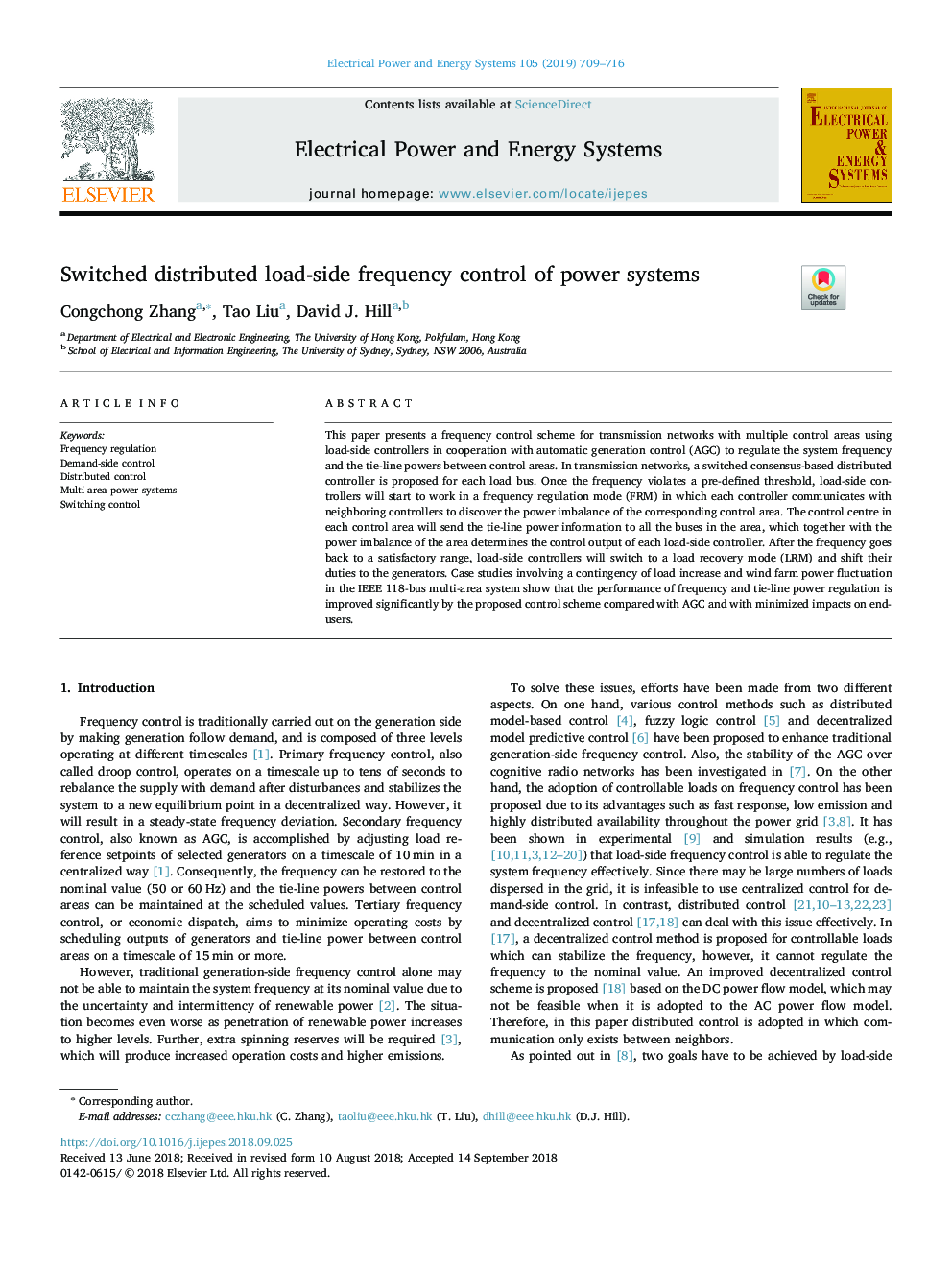| Article ID | Journal | Published Year | Pages | File Type |
|---|---|---|---|---|
| 11002358 | International Journal of Electrical Power & Energy Systems | 2019 | 8 Pages |
Abstract
This paper presents a frequency control scheme for transmission networks with multiple control areas using load-side controllers in cooperation with automatic generation control (AGC) to regulate the system frequency and the tie-line powers between control areas. In transmission networks, a switched consensus-based distributed controller is proposed for each load bus. Once the frequency violates a pre-defined threshold, load-side controllers will start to work in a frequency regulation mode (FRM) in which each controller communicates with neighboring controllers to discover the power imbalance of the corresponding control area. The control centre in each control area will send the tie-line power information to all the buses in the area, which together with the power imbalance of the area determines the control output of each load-side controller. After the frequency goes back to a satisfactory range, load-side controllers will switch to a load recovery mode (LRM) and shift their duties to the generators. Case studies involving a contingency of load increase and wind farm power fluctuation in the IEEE 118-bus multi-area system show that the performance of frequency and tie-line power regulation is improved significantly by the proposed control scheme compared with AGC and with minimized impacts on end-users.
Related Topics
Physical Sciences and Engineering
Computer Science
Artificial Intelligence
Authors
Congchong Zhang, Tao Liu, David J. Hill,
